#veiled woman
Text
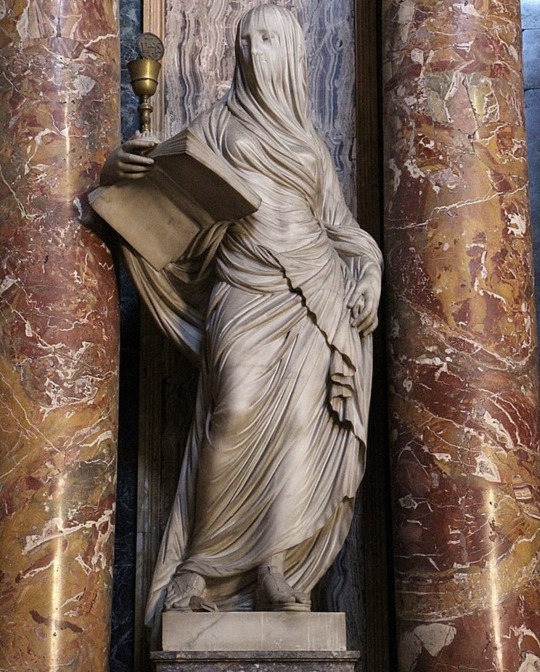
The Vestal Virgin Tuccia. Veiled Woman at the Palazzo Barberini, Rome. Created by Antonio Corradini (1743)
499 notes
·
View notes
Text

I love leo print 🥰🥰
#pregnancy#pregnant#mommytobe#babybelly#fully veiled#niqab#niqabstyle#niqabi#veiled muslimah#femalemask#veiled woman#veiled#proud muslimah#muslim girl#9 months#muslimah#lingiere#rp#women niqab
204 notes
·
View notes
Text



Feels so good to be back under the black veils
92 notes
·
View notes
Photo

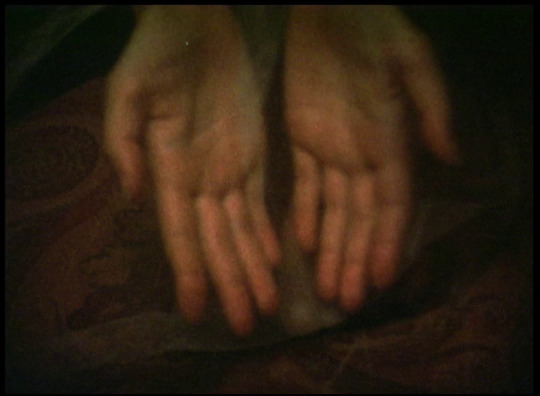
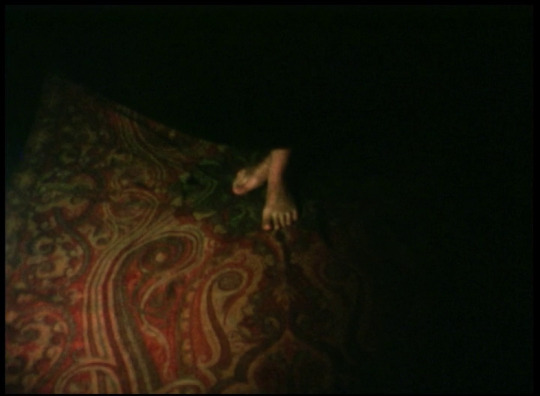
“Chutes de Maya” 1984
#chutes de maya#teo hernandez#hands in cinema#mexican cinema#experimental film#parvaneh navai#veiled woman
352 notes
·
View notes
Text



Veiled Woman - Antonio Coraddini 1724
#aesthetic#inspiration#dark academia#art#romantic academia#sculpture#art history#statue#italian art#history of art#marble#body sculpting#veiled woman#antonio coraddini
95 notes
·
View notes
Photo

Alley - Ghardaïa, 2022
#picoftheday#travel#algeria#algerie#original photographers#photographers on tumblr#street photography#streetphoto color#alley#veiled woman#photooftheday
97 notes
·
View notes
Text

Well paid to dance for the Prince she none the less desires to hide her identity from those who might object to her agreeing to act as a sex object for money. Luckily he likes his dancers veiled…
(Ai art made with Stable Diffusion)
38 notes
·
View notes
Text
I finally figured out how to explain who's allowed to see my hair: people I trust not to touch it.
24 notes
·
View notes
Text
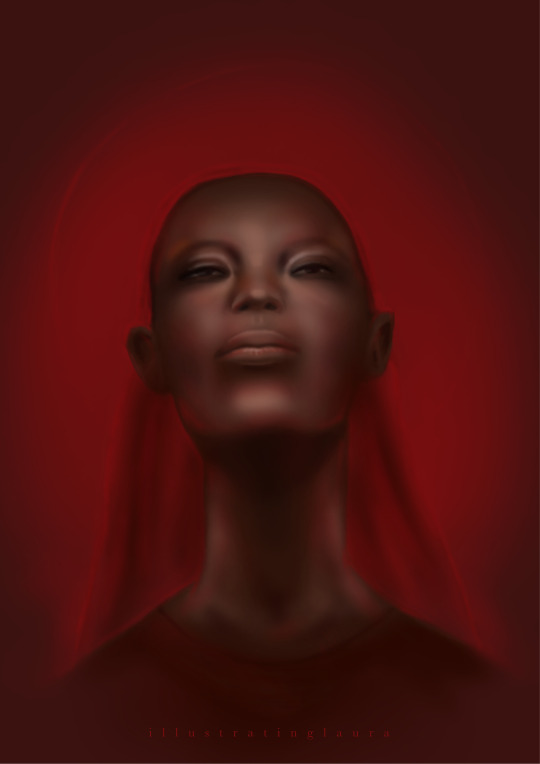
Crimson
#saint#black saint#saint art#christian art#church art#holy woman#female saint#veiled woman#veiled christian#headcovering#headcovering art#queen of saba
2 notes
·
View notes
Text
The Butcher of Ark: theories
I have finally finished reading "The Butcher of Ark" and boy... what a read. First it was written beautifully, and second it had so many little elements, so many things you could doubt, not to mention the final letter that explains the realistic take of things.
So, who do you trust? And what could be happening?
Was Jael, the Butcher of Ark, really a chosen one of the Black Libra? Was he a serial killer?

I decided to go through the plot of the books and talk about both takes, starting with the realistic take.
A) THE REALISTIC TALE: the letter at the end of the books is true
If we have to believe the last letter added to the book, then we have to imagine that the Veiled Woman is simply a representation of Jael's biological mother, asking him to find revenge for people like his father (he was only four and probably saw her killing the man, so these memories might have been vaguely retained in his mind). Not to mention that his adoptive father was so obsessed with being slighted and offended by people not respecting him, and we see this directly impacting Jael's reactions in the first chapters.
This also assumes that Qalian does not exist but is a fabrication of Jael's imagination, born from an idealized perfect, beautiful and charming version of a man he wishes he could be. Jael remarks many time how handsome and tall and strong Qalian is. This means that Jael did not kill the two people in the tavern - and the letter confirms that they were, in fact, alive. This is a proof (sort of) in favor of the whole story being born from Jael's obsessions/mind. Again, the writer of the letter says that he asked the innkeeper where apparently Jael and Qalian stayed and Jael was recognized, but not Qalian.
I think this means that, for sure, the man who worked at Tharael's orphanage, Nailaq, cannot be Qalian but is probably Jael, hiding behind the name of the man he wished he could be. I think this is true even if the tale is real - Jael is Nailaq. I remember when I played the quest, it was clear that Nailaq was following Jael, it felt to me like Jael was the main driver of the crimes. But reading the Butcher of Ark, Jael is the one with the most doubts, the most hesitance and less "leading" than Qalian. So I do think Nailaq is Jael even if Qalian existed, but if Qalian did not exist then we have a big question: we still have a mysterious body in a box which cannot be Qalian given that he never existed. Who he is?
1) Nailaq is Fleshless. When Jael killed himself in the temple of paintings, he was turned into a Fleshless one, but then - if this is true, it is more likely that some supernatural event was also involved in the Black Libra
2) The body in the box is actually Jael (or Qalian if we believe Jael is Nailaq) and Qalian always existed but somehow nobody remembered him
3) It is just a random person or another person

This means that in the case of the "we believe the letter at the end of the book", this should have been the events:
Jael is born of a man who is clearly unstable, very devout, abusive, who beats up both his son and wife in an attempt to get them rid of the "demons". Jael's mother (described as veiled) kills the man, probably in fron of Jael, before committing suicide. Jael is adopted by the Tanner, who becomes his father, and is described as someone who often feels offended and not respected by others. Jael grows up with this trauma which awakens one day. He dreams of his mother (the veiled woman) who talks about revenge and a new path. The thoughts Jael has after this are all connected to following the fire, wanting to be respected, wanting to kill the sins and the demons - a clear consequence of his trauma. Killing is a way to try and free the world from these sins, and also find a purpose and respect for himself. He imagines he is a chosen one, and invents an idealized man named Qalian who leads him to this fantastical world of chosen ones and justice. He ends up killing himself in a ritualistic manner - in a temple that seems to have some magical properties, and this end up creating a Fleshless version of him. Jael goes on rampages, killing people and thinking he is erasing sin from the world. One day he also kills ten girls, which ends up breaking him. Riddled by guilt he abandones this way.
The book is set about 50 years before the event of Enderal, so it could be that Jael in the meantime has somehow found the location of the temple?
Now, my personal problems with the "realistic" read is... how did Jael even found the temple of the Black Libra society? And Why does the Father disappear? There is clearly something magical happening in the Temple, and this seems to point to the direction of the Black Libra actually being real. Unless Jael accidentally found the Temple on his own and went mad after seeing reflections of himself (we know the Temple shows the Prophet his own dad, for example).

B) SOMETHING SUPERNATURAL IS GOING ON: let's trust Jael
So first of all, the printing of the book was probably modified and censored and we know that some pages are missing. As far as we know, the final letter added is just a way to make the tale seem unbelievable and maybe even protect the Black Libra, without erasing it from history.
Still, for this part I will take everything Jael says at face value.
The start of Jael's life is very similar to the "realistic" tale I written up above. He was adopted and he does not seem to remember anything of his past (the murder of his biological father and what his mother and father did). So what we have is the same until he has the dream. In the dream he sees his own body and a Veiled Woman (I will call her Veiled Woman but in the text she is simply called the veiled woman, so we do not know if it is the same person). The important thing about the Veiled Woman is that:
1) She has mementos of lost and old civilizations in her braids (ex. coins), which is interesting and seems to point to the fact that she might be the Veiled Woman
2) This is the only moment the Veiled Woman will be involved. Jael sees her in the dream, she speaks to him and that is it.
In the dream the Veiled Woman tells Jael that he is dying, he even shows him his dead body. This is seen by Jael (and the reader) as some kind of metaphore: you are on a wrong path (religious one) and you will die without even living, go and follow the right path. The Veiled Woman is the one who tells Jael "Follow the fire".
If she is the Veiled Woman, this is the first time where she only appears in a dream. In Enderal she only appears in person. This could mean that she has not enough "strenght" to appear in person (if we assume that the sacrifices in Esme's quests are to give her the ability to appear/manipulate reality) or that this is a Psionics event. The only other character able to communicate through dreams is the Father, with Psionics. Maybe there is something implanted in these chosen ones (by blood?) that is similar to Psionics and awakens them when ready to walk to the Black Libra?
Interesting, when Jael is awake he still hears some voices talking to him. In the text they are in a different font (or in bold). The voice says "You cannot escape destiny. (…) Follow the fire or else you will die." and then adds "She told you what to do". So this new voice is not the Veiled Woman.
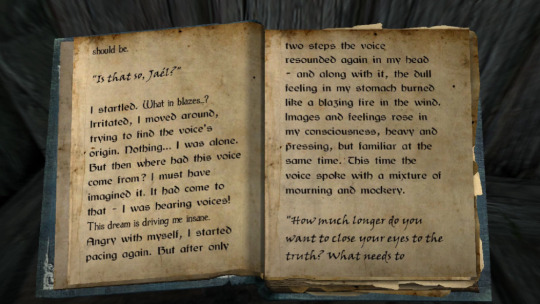
The theories here are:
1) The Veiled Woman has nothing to do with it, this is something manipulating Jael. But why send him a Veiled Woman? This woman has no meaning to him, why not send his father or a god?
2) There are multiple entities, one is the Veiled Woman acting in the dream or through Psionics, the other is another entity trying to shove Jael towards his destiny. In this case, the Veiled Woman somehow implanted these dreams in specific people/liniages, maybe in an attempt to stop the cleansing (make them kill the sinners = no more sins!), and then had kind of abandoned that plot. This whole ordeal/blood lineage is then being exploited by another entity
3) These new voice is just Jael's trauma. We see Jael's thoughts and this new voice interjects them often derailing them towards the path of violence. Maybe a representation of his biological father? or adoptive father? Jael just calles the voice… "the voice".
The Voice is very revenge-obssessed (but we also know that Jael's father spoke in a similar manner, complaining about people slighting him). The Voice also speaks in "me/I". The voice also demands to be feed with the flames.
Keep in mind that the Veiled Woman also never appears as a disembodied voice in the game… the Father does. After Tharael's quest, if you kill someone of the Rhalata, Father speaks in your head and kills you. Could this be another Psionics implant…? Or someone who managed to ascend their body?
At this point Jael is still alive - or is he? He could have died in his sleep and reborn right there as a Fleshless One and this explain why he starts this obsession, because we know that Fleshless Ones tend to exacerbate specific characteristics of their personalities. This means that in the Temple there was no murder - just a revelation that he had been dead all along. Given the use of mask, this might be my favourite interpretation.
The end of chapter 4 has Qalian meeting Jael. Qalian seems to recognize him as a kindred spirit. In this interpretation we accept that Qalian exists and is a real person, and that Jael really killed the two people in the tavern. Jael and Qalian talk and Jael notices that Qalian's eyes changed colour and not because of the flames of the camp. I am not sure what this could be, but it is clearly supernatural. Maybe something with also being Fleshless? Or maybe Qalian is something else? An entity like the Veiled Woman? In this case it would explain why he stays on Earth (if killing = some sort of sacrifice), but also why he is not noticed by everyone else (if we believe the final letter).
When the two start killing we know that Jael (and Qalian too) can sees and feel the murdered's sins. The voice says that these murders are to purify their souls, which in my opinion connects it with the overall theme of souls/bodies in Enderal and how the High Ones are just the collective souls of a civilizations. Still not sure how.
Qalian also reveals that he comes from an organization called Black Libra.
What we know of the Black Libra is that:
1) It sends letters to its agents. These letters appears in different places, but nothing is known of how. And they have the names of the sinners. During the Butcher of Ark, all the sinners chosen are actually murderers (confirmed by Jael feeling their sins)
2) The Black Libra is older than Enderal, the lightborns and "maybe even the tides"… so pretty old
3) They have Bastions, which are temples, one in each continent, but the locations are not known even by most of the members. In the case of the temple Jael visits, it is in a place with snow, which checks out with the temple with the paintings that we visit in Tharael's quest. Interestingly, this means that Tharael was a member who somehow had found the location of the temple
4) The members have to go through a certain ritual to fully be embraced as members of the Black Libra
The temple's paintings are, in order:
1) The Limbus (Arcanists called the state of derangement after overstraining one's mental capacities the Limbus)
2) The Washing (maybe the meaning: the nomadic journey of the Qyranians, when they head off to find the Red Mountain. Before they leave, they must perform a symbolic cleansing in one of their holy rivers, allegedly to discard their former self. A new beginning, so to say, a spiritual cleansing. This spiritual clensing might actually be the actual death, which would support the idea that Jael has been dead since the dream)
3) The First Stone
4) The First Blaze (a corpse on the ground, blood, the same man making love to a woman who looks like having horns) - represents the first killing
5) The Companion (meeting Q.)
6) The Rain of Flames
7) The Time of rest
8) The present
9) The renascence
They all represent Jael's story. If I remember correctly, when you visit the Temple you also see your father as a monster and has to defeat it, so there is something in the temple that is attuned to the people's minds and fears/past.
After Jael kills himself he says that his heart does not beat anymore. He looks back at the figures in the paintings who all have a mask, they take off the mask and - at this point we know that Jael screams and some pages are missing.
We do not know if he really died here, or if the mask represented the lie - and the truth is that he was always dead (at least since the dream) and Fleshless.
Another information we have from Enderal is that the temple in Enderal is almost alive. It has a heart, creatures of flesh coming out of it. We do not know if this was something that happened after the Black Libra used the temple or if it was always like that. Furthermore - leaving the flesh seems to be connected to the room of paintings, but it is not what Jael does in the temple.
The room of paintings does not disappear as far as we know, and it is there when we visit it in Enderal. Could it be that it comes and goes? And Jael becoming Fleshless or realizing he is is a different outcome than the Father simply… disappearing. Vanishing. This could be why we have to accept that a part from the missing pages the text has actually been modified, but even so - we know Jael killed the ten girls after, and he killed again, so he clearly still could walk the world.
After this, the last chapters, we find out that Jael feels guilty and try to leave the Black Libra.
Another strange note is the fact that during Tharael's quest, Nailaq confirms that him and Jael killed ten girls because they had been selected by the Black Libra as sinful (maybe future crimes, or mothers of future criminals). Up till this point, the Black Libra has seemingly given information that could have easily been collected through spies/detective work, so this is different. Another note is that the last chapter of the book stops with Jael abandoning the Black Libra. Given that we reads the ominous words about how nobody leaves the Black Libra… does this means that he ended up returning to it? And kept killing?
In this case, how did Jael really escape? By killing Qalian and pretending to be dead as well? Or did the Black Libra simply disappear? And if Jael has been dead since the dream or the temple - how did he find his body again before decomposition?
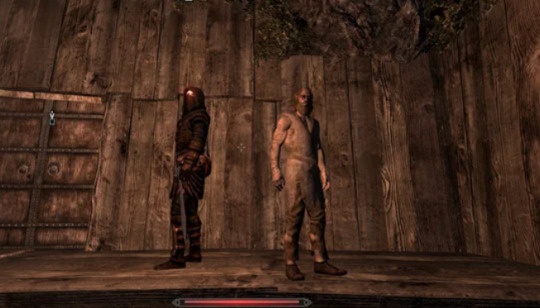
Just fun theory time now, but I do like the idea that the Black Libra was originally something there to given advantage to humanity. We know that the Veiled Woman, in the game, seems to want to give a small advantage to the people by choosing herself the Prophet and choosing you in particular, plus leading you to the correct places to fully realize the truth. We also know that the Cleansing happens because of "humanity sins" - and one of the desires of the Black Guardian is to fully "educate" people as a god and avoid these sins.
What if one of the Veiled Woman intervention was implanting some sort of "cheat code" in some lineages? Something that would create a religion/cult/organization out of trying to stop sinful people, and it got out of hand? Or something else hijacked it?
Well, we will never know!
EDIT: A wrong translation for English said that the book was 2000 years before, but it is actually 45 years. This means that it is not necessary for Jael to be Fleshless, but him being Fleshless would explain his suicide not... working.
#enderal forgotten stories#tharael#enderal#veiled woman#the butcher of ark#jael tannerson#lore#enderal lore
20 notes
·
View notes
Text
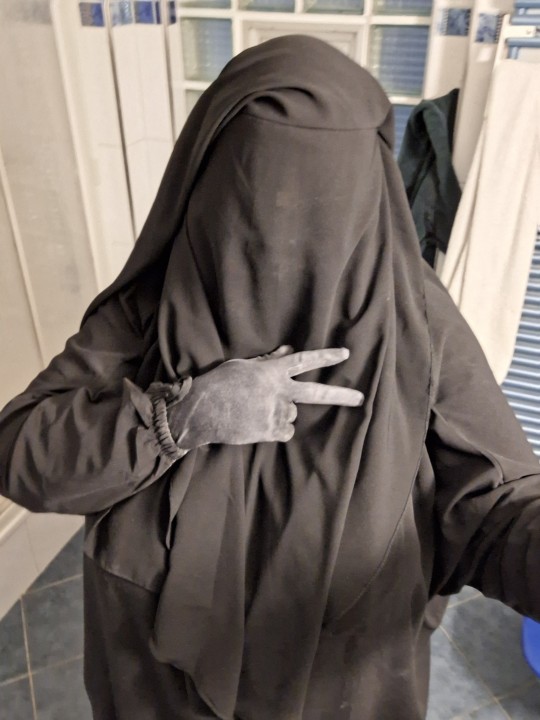
Still alive, hopeing you all started well
#pregnancy#mommytobe#pregnant#babybelly#fully veiled#niqabi#niqab#niqabstyle#veiled muslimah#femalemask#veiled woman#veiled#rp#happy new year#january 2024
73 notes
·
View notes
Text


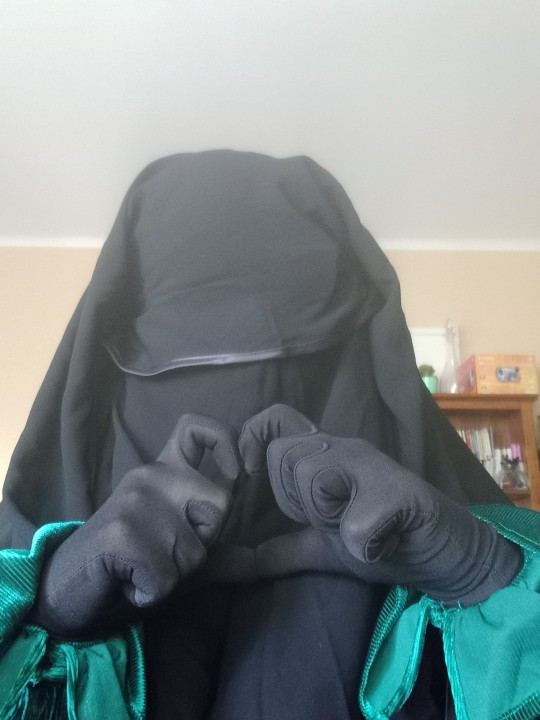
💚🖤
61 notes
·
View notes
Text

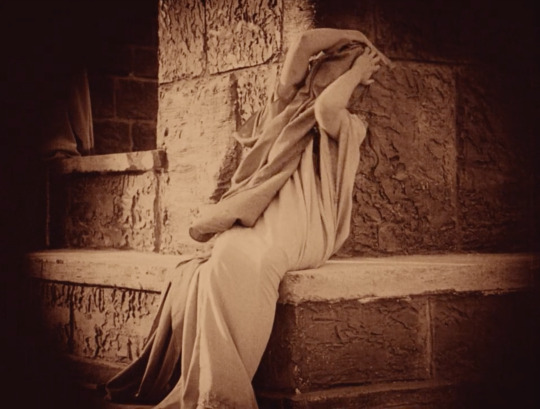
Intolerance (1916)
41 notes
·
View notes
Text
Veiled Woman (Faith)
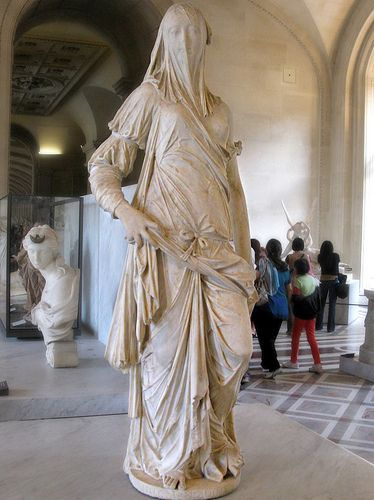
Title: Veiled Woman (Faith?)
Artist: Antonio Corradini
Date: early 18th Century
Movement: Italian Rococo
Medium: Marble
Genre: Statue
The Baroque movement started in Rome, and Italy became known as the birthplace of the Baroque. Despite this, the majority of the Italian Rococo were Italian artists who trained outside of Italy.
During the 18th century, Italy felt that England and France had left them behind and the country was in a state of decline. This lead to much of the art being heavily religious and had nothing o say about the upper class. We will see that in places like England and France didn’t always stay quite on their opinions on the aristocracy in their art. (William Hogarth and Jean-Honore Fragard)
As stated in the text book “Rococo” by Victoria Charles and Klaus H. Carl, “In Italy, the supports of the Baroque were the might of the aristocracy and the supremacy of the clergy. Those in power needed the supporting external pomp in manners, dress and architecture to underline their despotic position.
the statue above is (possibly) an example of such religious art.
#art#art history#Veiled woman#antonio corradini#Italy#rococo#Italian Rococo#Marble#Statue#marble statue#Faith
3 notes
·
View notes

